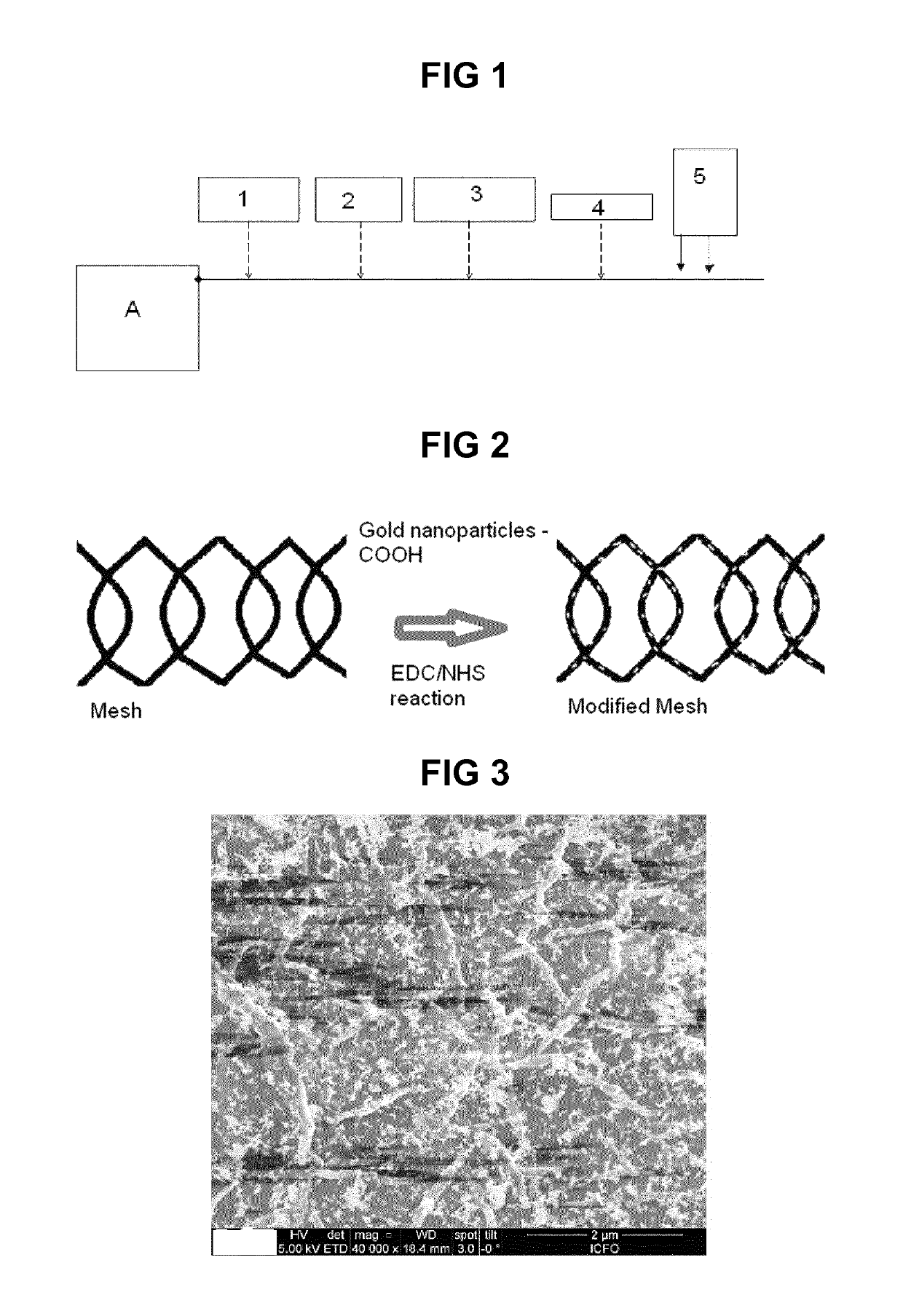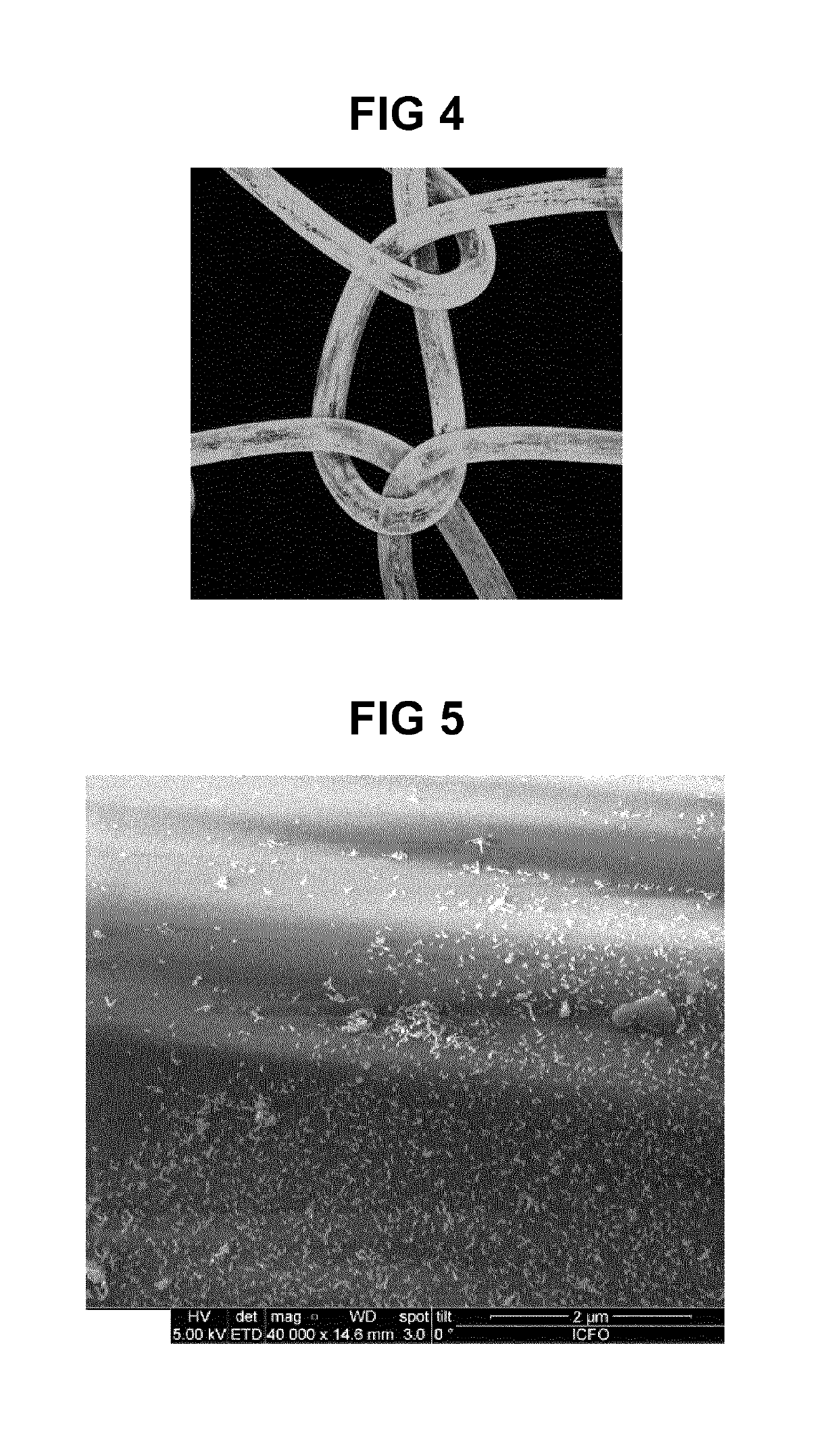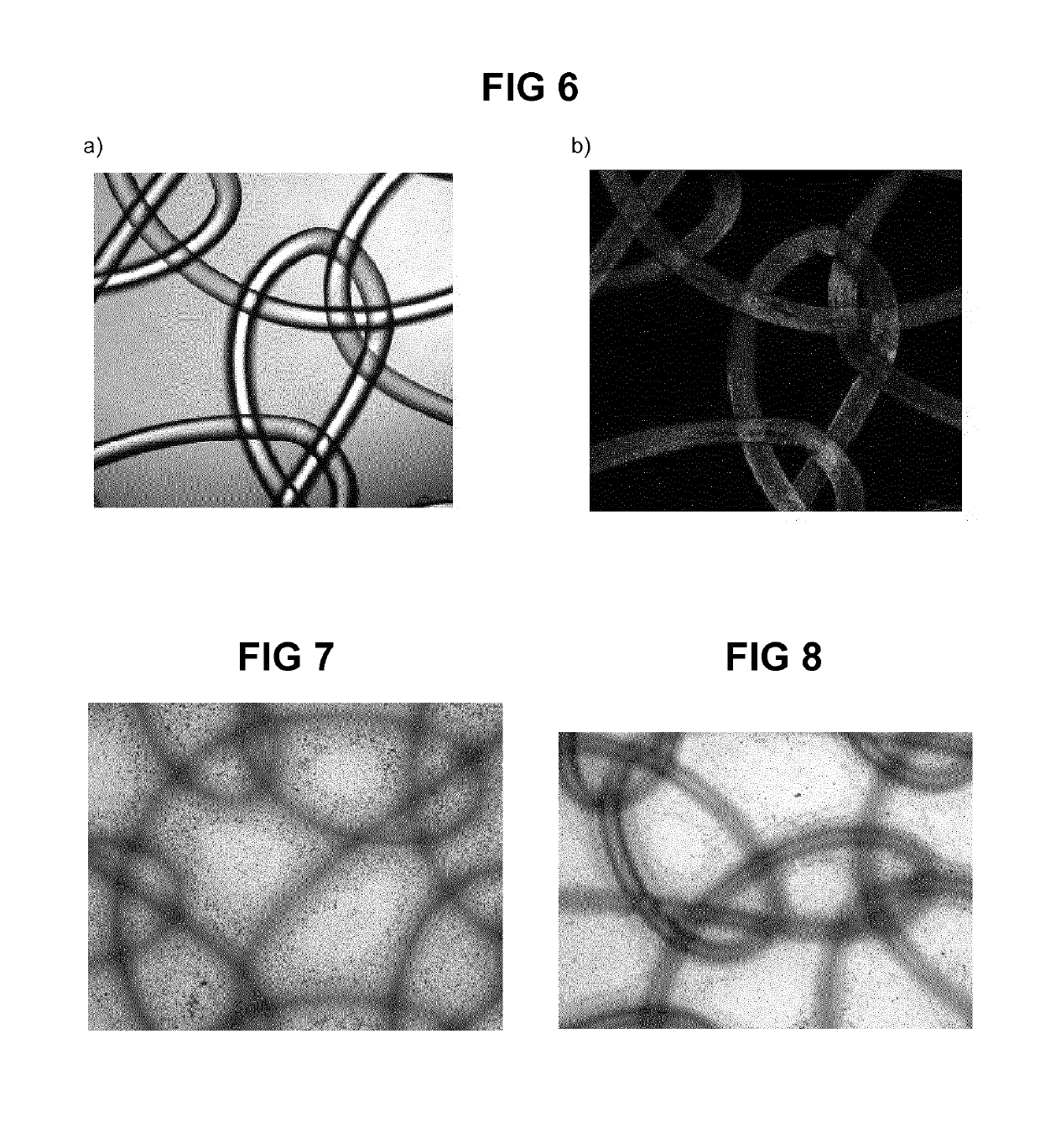Modified surface capable of having bacteriostatic and bactericide activity, the method for obtaining it and use thereof
a technology of which is applied in the field of modified surface capable of having bacteriostatic and bactericidal activity, can solve the problems that the gold nanoparticles of the rod-shaped shape will encounter difficulties in reaching the pathology area, and achieve the effect of convenient, reliable and non-harmful
- Summary
- Abstract
- Description
- Claims
- Application Information
AI Technical Summary
Benefits of technology
Problems solved by technology
Method used
Image
Examples
example 1
Mesh Modification by Thermal Gold Nanoparticles
[0107]The above described thermal gold nanoparticles were anchored in a mesh for a surgical implant. The thermal gold nanoparticles were conjugated to the mesh by 1-ethyl-3-[3-dimethylaminopropyl] carbodiimide hydrochloride (EDC) and N-hydroxysulfosuccinimide reactions (NHS). Briefly, 5 mg de NHS y 10 mg of ECD were dissolved in 1 mL of buffer 50 mM phosphate pH 7. Short after 2 mL of the GNR's solution were added to the buffer solution. After this step, the meshes were plunged in that solution for 4 hours. Right after the mesh was wash with pure water to remove any unbounded thermal gold nanoparticle. FIGS. 2 and 3.
example 2
Mesh Modification by Thermal Gold Nanoparticles
[0108]In this example, thermal gold nanoparticles obtained as described above and suspended in CTAB are linked to the amino modified mesh without further modification. The ability of metallic gold to complex with amino groups was exploited to form a great number of complex bonds leading to stable anchoring of gold nanoparticles to the mesh.
[0109]In practice, thermal gold nanoparticles suspended in CTAB after the growth step (100 mM CTAB) were centrifuged and the supernatant replaced by pure water to adjust the CTAB concentration to 3 mM and the nanoparticle concentration to an absorbance of 8 AU at 820 nm. The modified amino mesh was the added to this suspension and incubated overnight at 50° C. to perform the anchoring of thermal gold nanoparticles to the mesh. The mesh was then washed extensively with pure water. FIGS. 4 and 5.
[0110]Alternatively, the incubation time can be reduced by increasing the temperature or by addition of diffe...
PUM
| Property | Measurement | Unit |
|---|---|---|
| particle size | aaaaa | aaaaa |
| size | aaaaa | aaaaa |
| size | aaaaa | aaaaa |
Abstract
Description
Claims
Application Information
 Login to View More
Login to View More - R&D
- Intellectual Property
- Life Sciences
- Materials
- Tech Scout
- Unparalleled Data Quality
- Higher Quality Content
- 60% Fewer Hallucinations
Browse by: Latest US Patents, China's latest patents, Technical Efficacy Thesaurus, Application Domain, Technology Topic, Popular Technical Reports.
© 2025 PatSnap. All rights reserved.Legal|Privacy policy|Modern Slavery Act Transparency Statement|Sitemap|About US| Contact US: help@patsnap.com



